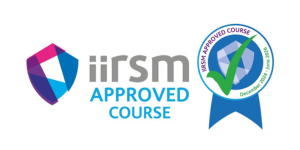TT23 | 2 days
Effective root cause analysis and corrective action is a regulatory requirement for good reason. A problem will simply return without a full understanding of why it occurred in the first place, leaving you exposed to the same risks and inefficiencies.
However, the quality of responses detailing root cause and corrective and preventive actions varies considerably, with much confusion over what constitutes a root cause and how best to identify it. With multiple methodologies available, how do you choose which one is the right one for you, and how can you be sure that your proposed solution will be effective?

Delivered exclusively for your company
How will this course benefit me?
Compliant with the standards outlined in the CAA guidance document CAP 1760, this course will show you how to investigate all aspects of an event to identify the underlying problem (root cause), separate it from the contributing factors, and enable you to effect changes that prevent re-occurrence and result in demonstrable continuous improvement.
It will equip you with:
Key areas of focus
Is this course right for me?
Course Details
Course format: This course is a balanced mix of group discussions, flipchart work and PowerPoint presentations. Managed syndicate exercises give you the opportunity to practise the application and evaluation of new processes and techniques.
Course level: Foundation Level Training (F) is suitable for those with little or no prior knowledge of the subject who are looking to develop a fundamental level of understanding and competency.
Assessment process: No formal assessment. Two-way dialogue and exercises enable the facilitator to assess and optimise delegate learning.
Course size: 12 persons maximum at our Aviation Safety Academy or on-site at your facility
Prerequisites:
There are no prerequisites required to attend this course. It is, however, expected that attendees have a basic understanding of the EASA regulations.
Our investigations courses concentrate on investigations as one of the methods of establishing the root cause of an event, but don’t go into any detail about other possible methodologies. This course gives an overview of the root cause analysis process and explores alternative methods to investigations in greater depth.
Yes, techniques covered (but not restricted to) include the 5 whys and Ishikawa Fish Bone, with practical exercises leaving you fully competent in their application.
Duration: 1 days
Reference: TR01
Course details
Duration: 4 days
Reference: TS30
Course details
Duration: 4 days
Reference: TS05
Course details
Duration: 3 days
Reference: TS101
Course details